In 1961 the UK motorcycle learner laws required manufacturers to take the 250cc market seriously, so in 1964 one manufacturer with a prestigious past offered a model with its name embedded in the future
This model’s futuristic name was an unusual choice for the Redditch-based company, as the word ‘turbo’ was not very common in the early 1960s.
Just one year prior to its arrival, Chevrolet and Oldsmobile produced the world’s first turbocharged production cars; maybe this influenced the decision?
Alternate opinions consider that the name promotes the silent, super-smooth, almost turbine-like power delivery offered by the rubber-mounted Villiers motor.
While Royal Enfield’s history is rich and colourful, there is a modern biker generation which really only associates the name with Chennai, India, so it may be worth pointing out that over the years Royal Enfield produced bikes from five locations around the UK – including one 90ft underground in Wiltshire.
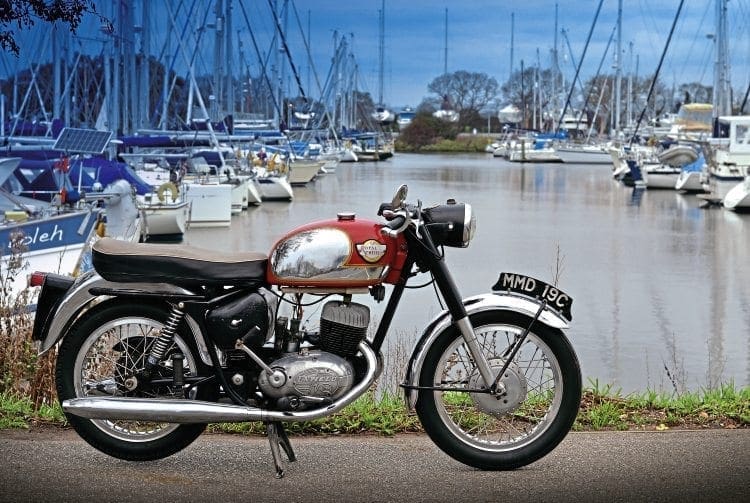
With a nine bike range on show at Earls Court in 1964 and with Geoff Duke OBE extolling the virtues of the marque to the masses on stand 75, surely this should have been a prosperous time for the company? Unfortunately it was in fact the beginning of the end.
Prosperous Past
Similar to BSA – Birmingham Small Arms, remember – Royal Enfield was first and foremost a manufacturer of weapons which began to produce bicycles from 1893.
Its first vehicles, in the form of trikes and four wheelers, arrived just prior to the turn of the century. Motorising a cycle in 1901 led to the development of BSA’s first motorbike, the Model 180, in 1912.
This showed the company’s potential, with innovations such as the two-speed gearbox and a chain drive with the world’s first rubber ‘cush hub’.
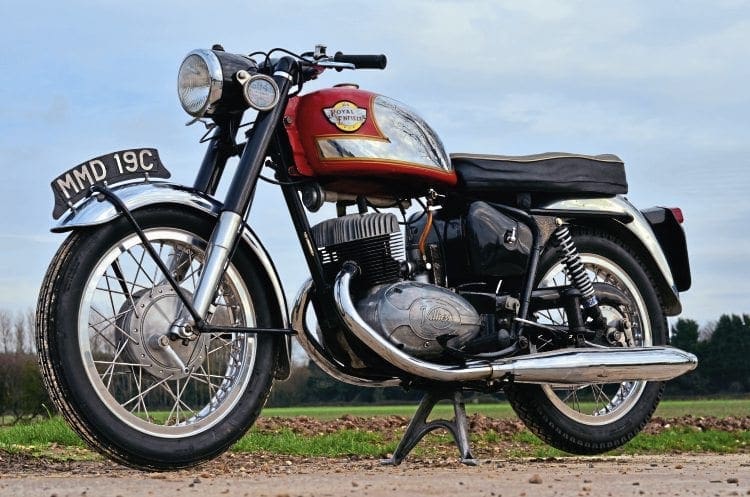
A second version featured a smaller V-twin engine of 425cc which benefited from an automatic oil pump, overnight consigning the commonplace manually operated versions to obsolescence.
Royal Enfield continued to expand, especially during the war years, taking large Government contracts to supply both cycles and motorcycles to the army during the 1914-18 conflict.
During the Second World War the factory released some 55,000 machines to the Allied effort, many from its bombproof underground factory in Westwood Quarry, Wiltshire.
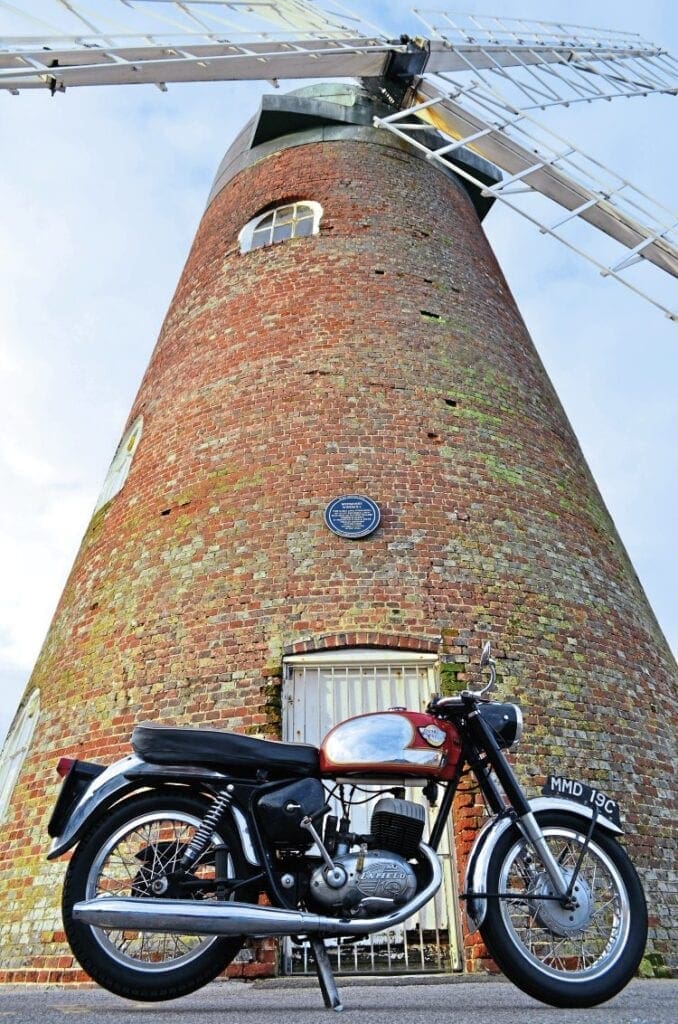
Nicknamed ‘The Cave’, this secret establishment continued to produce motorbikes until the late 1960s.
More innovation followed postwar, including swinging arm rear suspension, which wasn’t just more sophisticated than anything from RE prior to its introduction – they never went down the ‘plunger’ suspension blind alley – but it also led to domination in trials competition when the 350 Bullet was paired with the talented Johnny Britain; a combination that ruled the sport for nearly a decade.

The Turn of the 250s
Late Fifties and into the Sixties, then. The 250cc market was becoming worthy of investment for all manufacturers, and the Crusader range offered much, including unit construction, modern powerplants and a lively sports version – but it was the Continental GT single that would become a firm favourite.
In 1965 the GT could outperform Enfield’s rivals and offered real café racer looks as well a five-speed gearbox; a real head-turner on the North Circular Road, no doubt.
The original 350 and 500cc Bullet singles were disappearing from the sales floors in the UK by the early 1960s, and with little market demand for middleweight singles to replace them the company’s investment transferred to the learner-legal 250cc market.
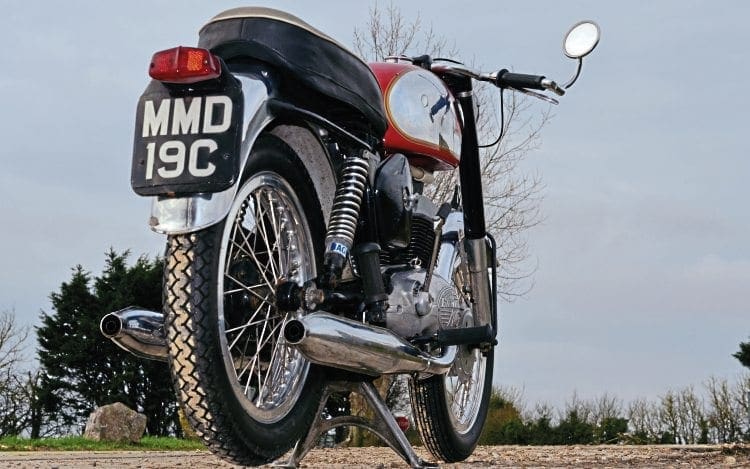
All too soon, only the Interceptor remained flying the flag for the RE big twins. Geoff Duke joined the company in 1964, his task to revitalise Enfield’s image and sales, as well as exercising development control over their GP5 250cc racer programme.
Unfortunately just 20 of these race-ready machines were built before funding became an issue, whereupon the project ceased – as did the Duke’s involvement with Enfield.
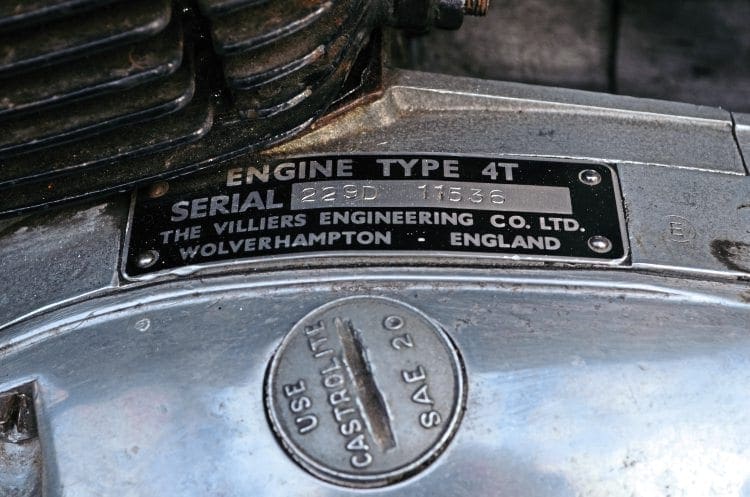
A Brilliant Bitza?
The Villiers 4T two-stroke motor arrived on the scene in 1963. It was very similar to the 2T launched in 1956, but featured an extra pair of transfer ports and ported pistons offering higher compression.
With a four-speed gearbox, the unit offered 17bhp, and by marrying to the existing Crusader single’s frame Enfield hoped to produce a 70mph machine with great handling, and indeed early road tests confirmed this had been achieved.
In fact one publication confirmed that “firm springing and a low centre of gravity make bend-swinging a pleasure”.
A low 29in seat height catered for the more vertically challenged, although the ride isn’t too cramped for those taller folks, and reasonable progress can be made as long as the Villiers unit is kept buzzing.

One feature that was noted by publications in the Sixties was how quiet the bike was on the move, and with the silencers designed especially for the 4T the muted tone remains today.
The 17in wheels employed 6in diameter brake drums front and rear, adequate for the time but maybe more than a little underwhelming on today’s roads.
Like much of the bicycle, most of the running gear was taken from the Clipper model. Telescopic front forks and Enfield’s well-braced rear swinging arm arrangement ensured that this 300lb machine could be ridden with great enthusiasm, restricted only by the too-easy grounding of the centrestand.
The suspension was considered firm for the time but that added to the sporty feel, and it was no surprise when the Turbo Twin Sports model arrived in 1964.
Chrome finish to the tank and mudguards plus dropped handlebars came with the new model, and as Geoff Duke confirmed: “Whether your choice is the Standard or Sports model, you’ll be thrilled by the exciting new Turbo Twins – genuine value for money that lead the way in the twin cylinder two stroke field.”
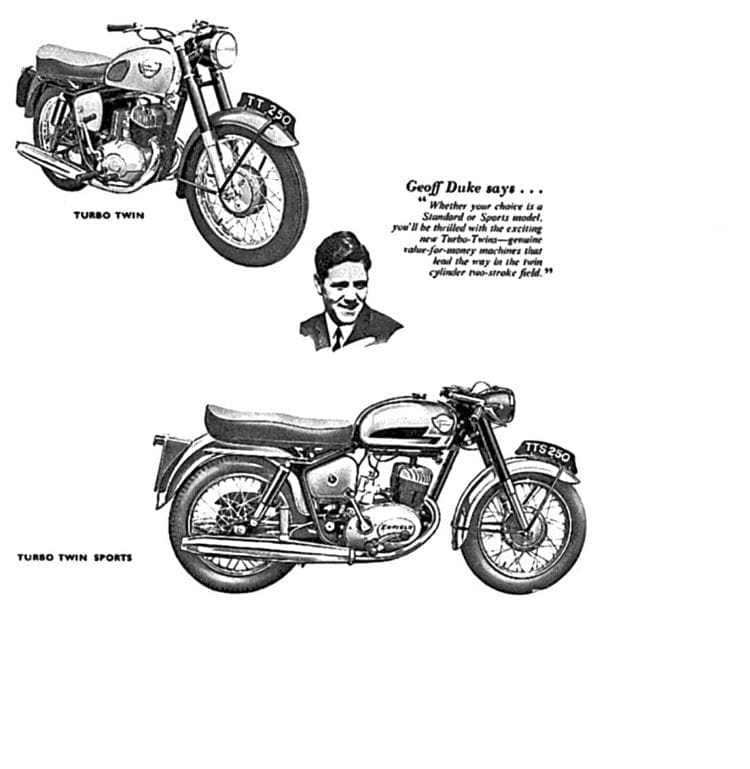
The price was right at just £20 more than the existing machine; £215 including taxes got you on the road with a Sport.
One Man, Many Machines
A small strip of land, some eight miles long, reaches out into the Channel; it’s about as far south as England reaches and is known as the Manhood Peninsula.
At the tip sits the small town of Selsey, often threatened by the incoming sea. It is home to quite a few classic characters, including lifelong biker Derek Carter-Hammond.
Being perched on a 1939 Norton for a family photo certainly had an effect on a pre-school Derek who began biking as soon as legally allowed, if not slightly prior.
“My first machine was an NSU Quickly, followed by a Lambretta LD150, but I fell off that within a week,” my host informed me. He then purchased a 350cc Triumph T21 and barely a day has passed in this man’s life where he hasn’t enjoyed two wheels.

“These bikes weren’t classics back then,” he continued, “but now looking back, like most folk I wish I had kept just a few of them.” His garage currently features a 500 Bullet, a BSA C11, a Flying Flea and a 1936 Excelsior Meritor plus a Hinckley Triumph. The Turbo Twin belonged to a great friend and fellow Sussex British Motorcycle Club member Don Noble.
“When he passed away his collection found new custodians and I was lucky enough to purchase the Sport.” Five owners from new and with an engine rebuild back in 2009, the bike was pretty much up and together. It had also been regularly ridden by the previous owner, so Derek continues the tradition.
“It’s not concours, but I do like to ride and while I would never thrash any of my machines, they do get a workout whenever the chance presents itself.”
Suitably attired, Derek wheeled the Turbo Twin Sport out, and on the third kick the familiar two-stroke note filled the air, along with a blue haze.
“The choke is a terrible idea,” he pointed out. Activated by a plunger on top of the Villiers carburettor, push down for choke on and pull up to switch off; impossible when moving; the rider is forced to stop once the engine has some heat in it. I followed the blue haze through the country lanes, and over a coffee break I enjoyed an honest opinion of Enfield’s Sport from the owner.
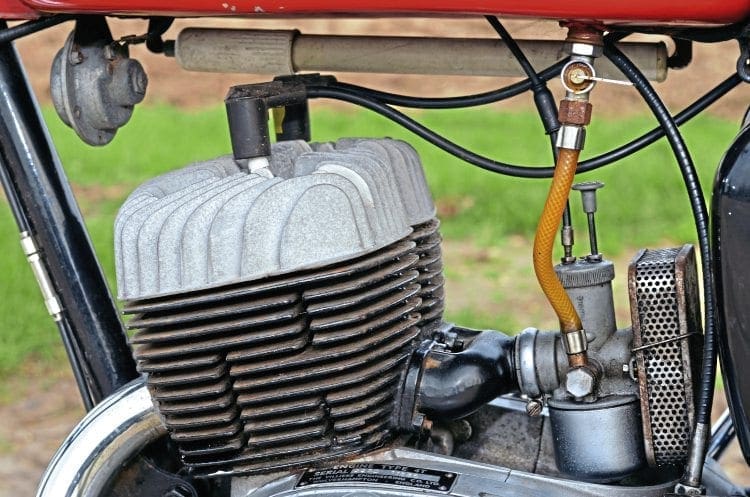
“The front brakes aren’t brilliant, but the rear is very good. The forks are adequate and overall the bike handles really well but – rider beware – the centrestand scores tarmac far too soon.
“A comfy seat that is okay for a few hours’ riding – even at my age – and with such a big fuel tank on a small bike, fewer pit-stops are needed. The clutch is light and the gearbox positive even by today’s standards, making the bike relaxing to ride, even if the ace dropped bars eventually get to your wrists.
“Running Avon Speedmaster tyres works very well with this bike in any weather and there is little to worry about with the electrics either. The headlight is better than a candle with a small on/off switch, while the horn and dipped beam are both operated via the handlebar mounted control.”
After spending a few hours with the Turbo Twin I began to appreciate many of Derek’s points.
A 1965 vintage two-stroke that sounds almost silent compared with the far eastern oil burners that took control over the following decade.
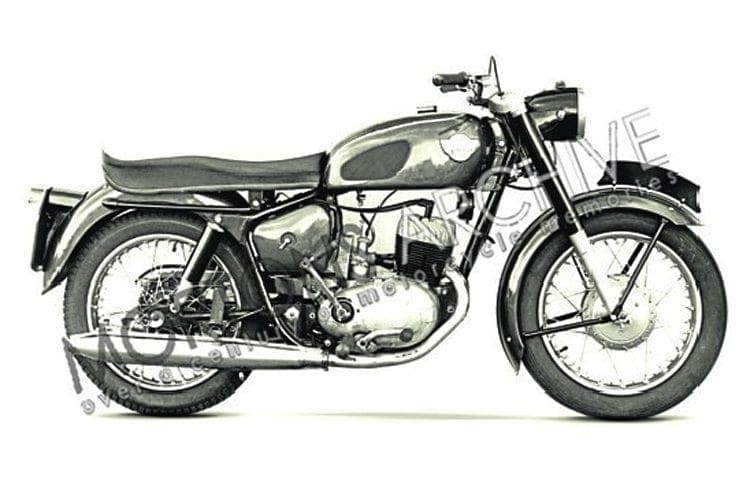
Ideal for the shorter rider and very light to manoeuvre for a 50-year-old British classic, this Enfield buzzed around the Sussex countryside with plenty of vigour.
So what about the performance? Is Derek still able to get the most from his steed?
“You don’t need to scream the motor to accelerate quite rapidly. Keeping with modern traffic is easy enough, but like the rider this old girl is comfortable with a maximum of 50mph – she will do more but, like me, doesn’t want to.”
To conclude, this Royal Enfield model is a rare item nowadays. It offers a unique appeal, is easy to maintain and, being light and agile, is a pleasure to own, according to Derek. Tracking down a suitable example will require some patience, however.
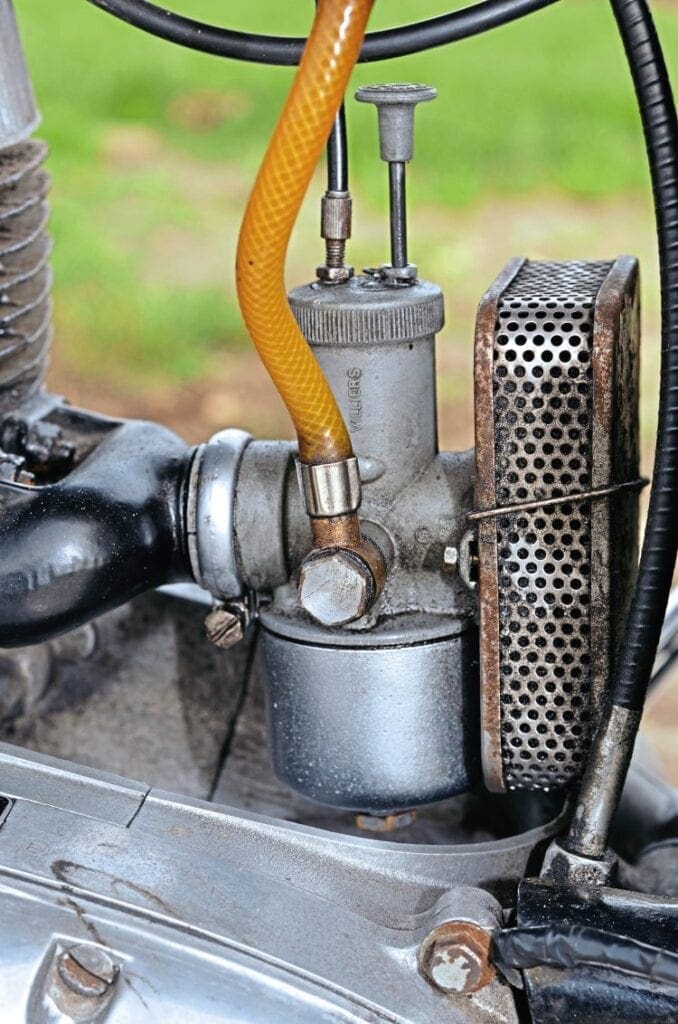
Offering great value transport in their day, these machines would have been daily drivers. Although the model enjoyed just a three year production run, parts supply today is good and pricing remains sensible, making this Enfield a good choice for a classic newcomer.
And asking the man from Selsey if he would consider selling on, Derek instead confirmed that after a lifetime playing Motorbike Monopoly this Turbo Twin Sport is a keeper.
The highest commendation.
Royal Enfield Gossip
First World War fuel rationing saw the then current Enfields becoming machines of choice for those looking to run their bike on coal-gas; often trailered behind a 6hp sidecar outfit in a huge balloon.
One lady enthusiast had her gasbag fitted to a large tray above the occupants’ heads, and while the engine power was reported as being unchanged, the same could not be said for the aerodynamics of such transport.

Safe from German bombers, during the Second World War the Royal Enfield works at Westwood Quarry housed priceless art from London’s museums and Buckingham Palace, alongside production of various motorcycles including the Flying Flea.
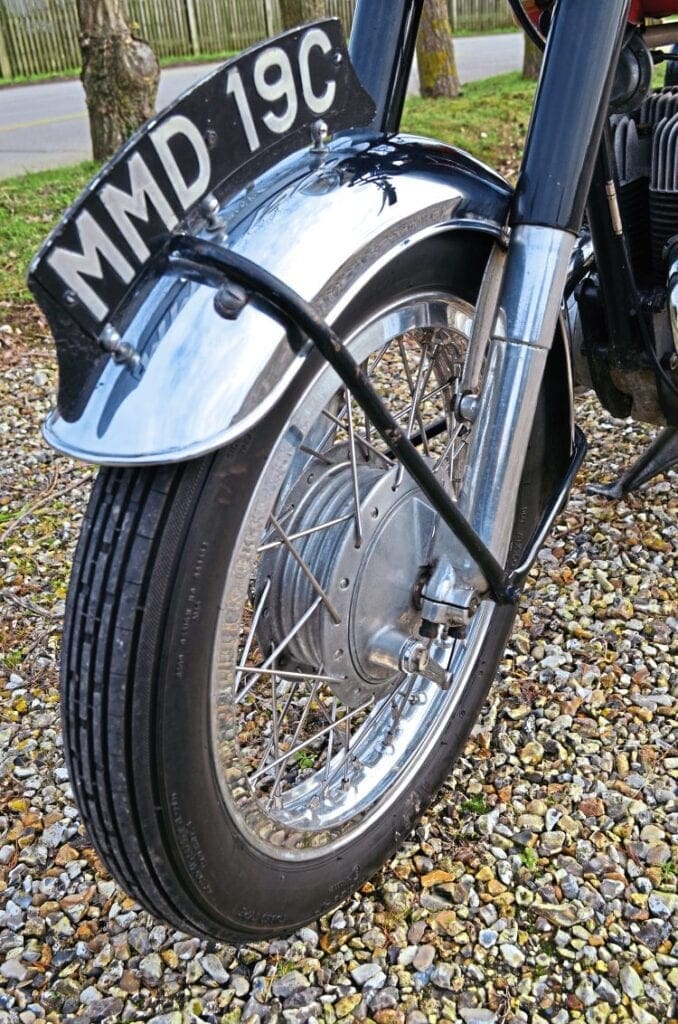
The company’s engineers also supplied many wartime requirements, including gyroscopic gun sights, armour piecing shells and stabilisers for search lights.
In 1982 The Times reported that the final assets of Triumph, including the name, would be sold to one of the two bidders that remained interested, the first being Cagiva, the other Enfield India.
Enfield Industrial Machines was purchased by Greek shipping millionaire John Goulandris who formed Enfield Automotive, producing a small electric car in the mid-sixties and set up a manufacturing plant in Cowes on the Isle of Wight.

The IOW plant went on to produced a prototype 4×4 vehicle and off-shore power boats under the Enfield Marine Division. The name continues today, using a version of the famous gun logo and providing electric guitars.
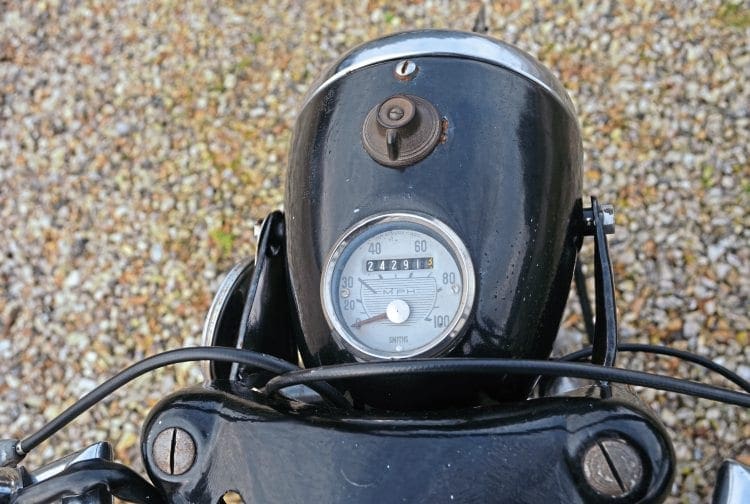
Royal Enfield Turbo Twin Sport Specification
ENGINE: Villiers 249cc Mk 4T two-stroke twin TRANSMISSION: Villiers four-speed CARBURETTOR: Villiers S25 plunger type ELECTRICS: Villiers 6 Volt FUEL CAPACITY: 3½ gallons WEIGHT: 298lb PERFORMANCE: top speed 75mph; standing ¼ mile 21.6secs FUEL CONSUMPTION: 96mpg @ 30mph / 52mpg @ 60mph GROUND CLEARANCE: 5½ inches

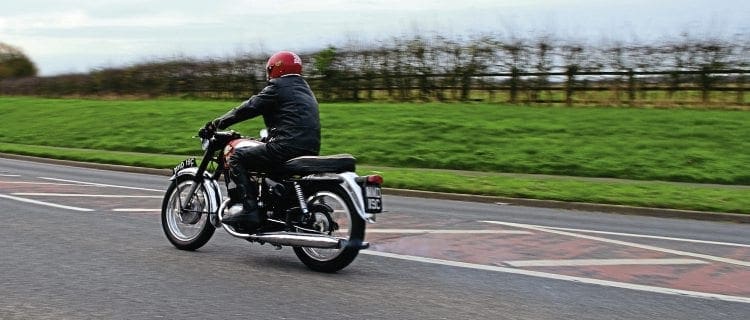
Read more News and Features online at www.classicbikeguide.com and in the latest issue of Classic Bike Guide – on sale now!




